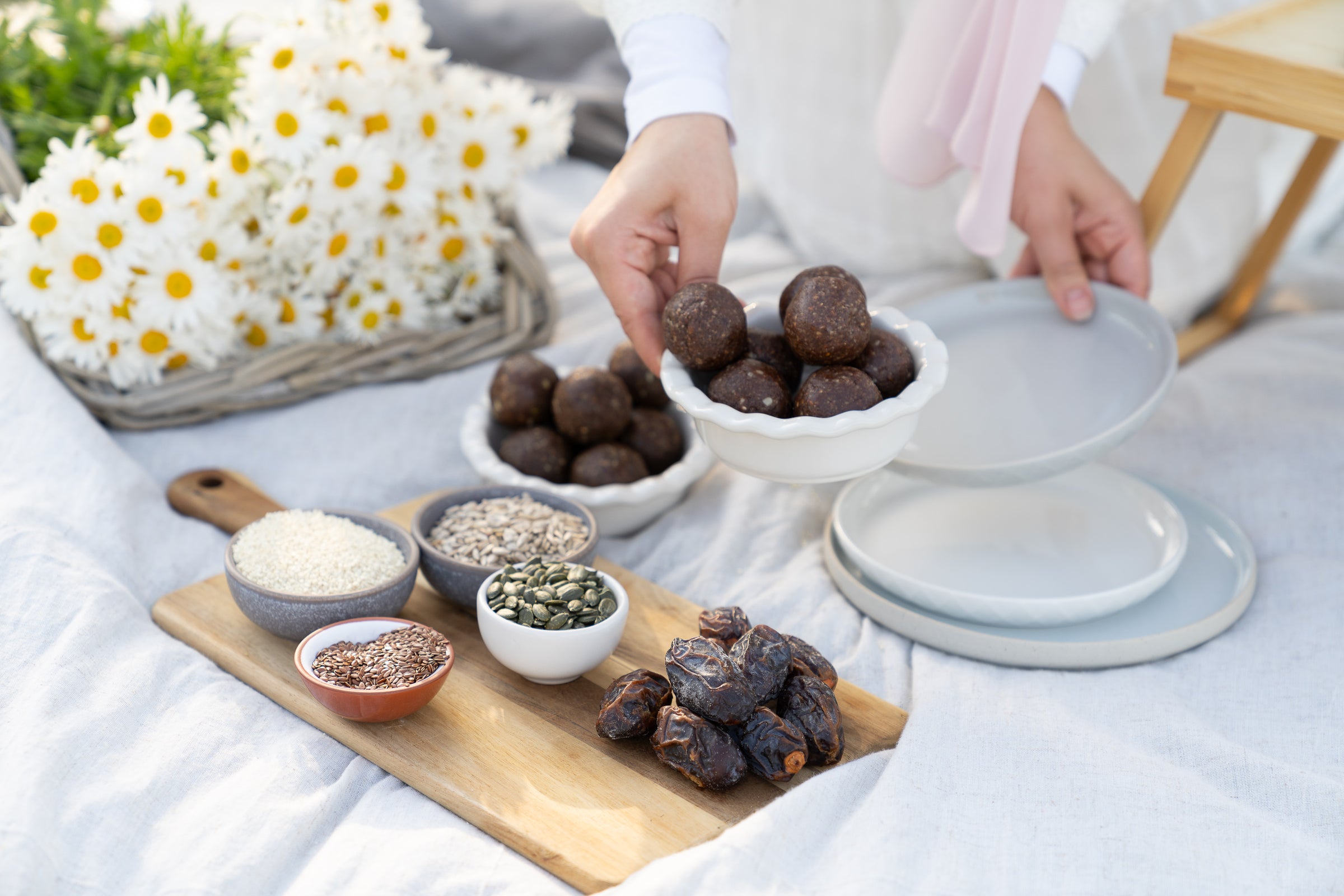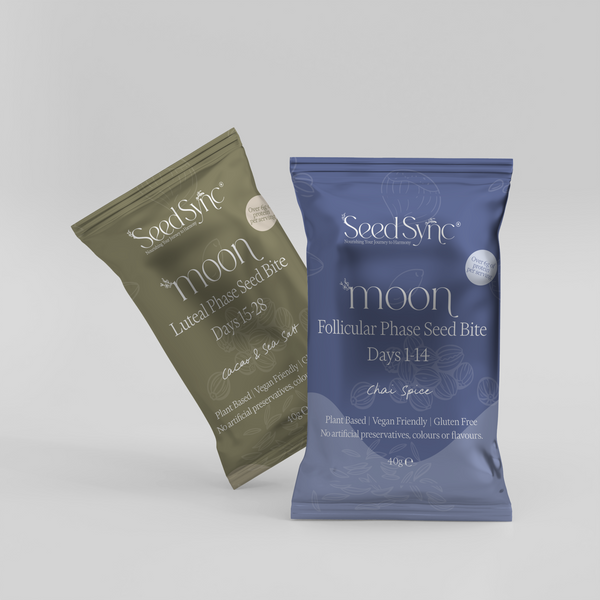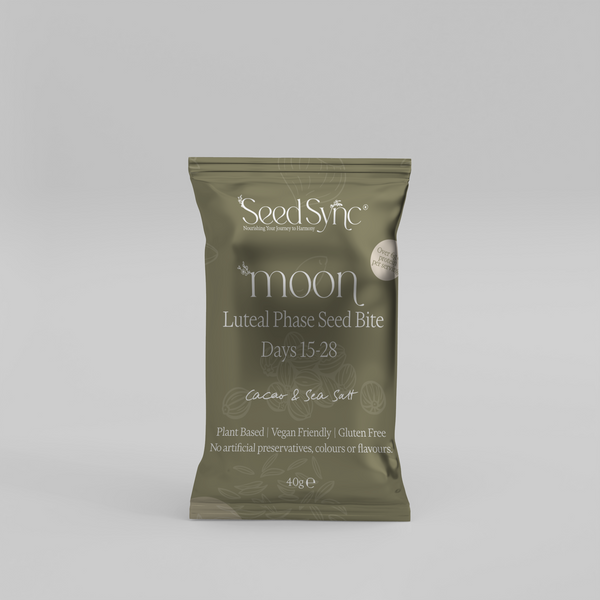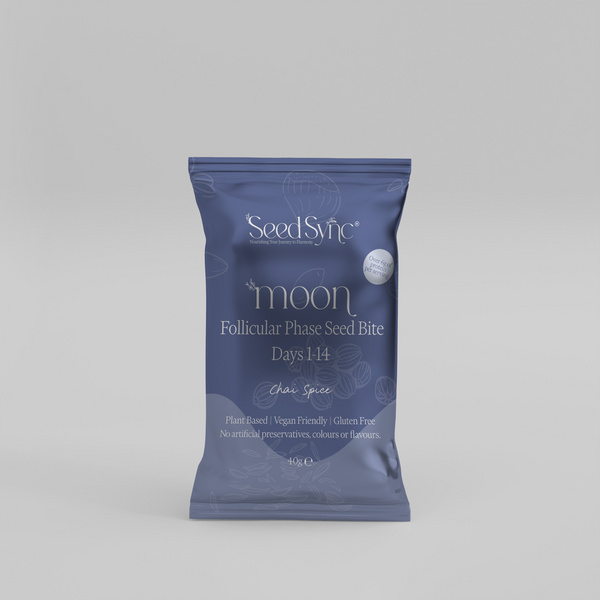Understanding Seed Cycling: A Natural Way to Support Your Hormones
Posted on October 11 2024,
How Seed Cycling Supports Women’s Health Through All Stages of Life
Women’s hormones fluctuate throughout their lives, influencing everything from mood and energy to fertility and menopause symptoms. Seed cycling is a natural, nutrient-rich way to support hormone health during every stage. Whether you’re a teenager managing your first period or navigating the challenges of menopause, seed cycling offers benefits tailored to your body’s unique needs.
What is Seed Cycling?
Seed cycling involves eating specific seeds—flax, pumpkin, sesame, and sunflower—during different phases of your menstrual cycle to support hormonal balance. These seeds are rich in nutrients that promote the production and detoxification of key hormones like estrogen and progesterone.
The beauty of seed cycling is its adaptability—it works for women with regular or irregular cycles and can even support those who no longer menstruate.
How Seed Cycling Benefits Women at Every Life Stage
1. Adolescence: Supporting Healthy Menstrual Cycles
During puberty, hormone production begins to regulate menstrual cycles. Hormonal changes during puberty can lead to irregular periods, acne, and mood swings. Seed cycling supports young women by promoting balanced estrogen and progesterone levels.
Seed cycling can help:
- Balance estrogen and progesterone: Flax seeds provide lignans to balance estrogen, while pumpkin seeds support progesterone production.
- Ease PMS symptoms: Omega-3 fatty acids in flax seeds reduce inflammation, while zinc in pumpkin seeds supports mood stabilization.
Seed Cycling Tips for Teens:
- Start with 1 tablespoon of ground seeds daily, divided between flax and pumpkin seeds for the follicular phase (Days 1–14) and sesame and sunflower seeds for the luteal phase (Days 15–28).
- Blend seeds into smoothies or sprinkle them on breakfast bowls for easy consumption.
2. Childbearing Years: Promoting Fertility and Regular Cycles
During reproductive years, women often focus on fertility, energy, and reducing symptoms like cramps or irregular periods. From managing PMS to preparing for pregnancy, seed cycling can be a natural tool for hormonal harmony. During these years, many women experience fluctuations in estrogen and progesterone levels that impact mood, fertility, and energy.
Seed cycling can help by:
- Regulating cycles: Balanced estrogen and progesterone levels support ovulation and regular periods.
- Boosting fertility: Studies have shown that lignans in flax seeds may have a positive effect on reproductive health by supporting hormone metabolism. Zinc from pumpkin seeds and selenium from sunflower seeds promote egg quality and reproductive health.
- Relieving PMS: Lignans in sesame and flax seeds modulate estrogen levels, reducing symptoms like bloating and mood swings.
Seed Cycling Tips for the Reproductive Years:
- Use freshly ground seeds for maximum nutrient absorption.
- Pair with nutrient-dense foods like avocado or yogurt to support overall health.
- For irregular cycles, follow a 28-day pattern: 14 days of flax and pumpkin seeds, followed by 14 days of sesame and sunflower seeds.
3. Pregnancy and Postpartum: Hormone Recovery and Milk Production
While seed cycling doesn’t replace medical advice, it can be a gentle way to provide nutrients like omega-3s, zinc, and selenium during pregnancy. Postpartum, seed cycling can help support hormone regulation as the body returns to its natural rhythm.
Even though pregnancy and postpartum aren’t part of the menstrual cycle, nutrient-rich seeds can still play a supportive role in providing essential nutrients to support recovery and hormonal balance postpartum.:
- Hormonal recovery: Sunflower and sesame seeds aid liver detoxification, helping the body process pregnancy hormones.
- Breast milk production: Flax seeds contain phytoestrogens, which may promote milk supply in breastfeeding mothers.
Seed Cycling Tips for New Moms:
- Consult a healthcare provider to ensure seed cycling fits your nutritional needs during and after pregnancy.
- Add seeds to lactation-friendly recipes like energy bites or oatmeal to support milk production.
4. Perimenopause and Menopause: Easing the Transition
As estrogen and progesterone levels decline during perimenopause and menopause, seed cycling can help alleviate common symptoms like hot flashes, night sweats, and mood changes and support overall well-being during this transition.
- Hormone modulation: Lignans in sesame and flax seeds act as phytoestrogens, helping balance fluctuating hormone levels. Phytoestrogens in seeds have also been shown to reduce the frequency and severity of hot flashes in menopausal women .
- Bone health: Calcium and magnesium in sesame seeds support bone density, which is crucial during menopause.
Seed Cycling Tips for Menopause:
- Even without a menstrual cycle, you can follow a 28-day pattern (14 days of flax/pumpkin seeds, followed by 14 days of sesame/sunflower seeds).
- Focus on consistency—add seeds to soups, salads, or baked goods.
How to Start Seed Cycling
Here’s how to incorporate seed cycling into your routine:
- Follicular Phase (Days 1–14): 1–2 tablespoons of flax and pumpkin seeds daily.
- Luteal Phase (Days 15–28): 1–2 tablespoons of sesame and sunflower seeds daily.
- Tips for Busy Women: Add seeds to smoothies, yogurt, or energy bites for a quick and convenient option.
Good tips to keep in mind:
- Choose High-Quality Seeds: Select raw, good quality seeds to maximize their nutrient content.
- Grind Freshly: Flax and sesame seeds should be ground before eating to aid digestion and nutrient absorption.
- Stick to the Schedule: Rotate your seeds according to the phases of your cycle (or a 28-day plan if you’re not menstruating).
- Incorporate into Meals: Add seeds to smoothies, salads, oatmeal, or baked goods for a simple and tasty routine.
FAQs About Seed Cycling for Women’s Health
Q: Can seed cycling help with irregular cycles?
A: Yes! If your cycle is irregular, follow a 28-day schedule (14 days for each phase) to align with the moon phases or consult a healthcare provider.
Q: How long does it take to see results?
A: Many women notice improvements within 2–3 months, though it may vary.
Q: Can I seed cycle if I’m on birth control?
A: While seed cycling doesn’t interfere with birth control, its hormone-regulating effects may be less noticeable.
Q: Can I seed cycle if I’m postmenopausal?
A: Absolutely. Postmenopausal women can use seed cycling to support hormone modulation and overall health.
Try Seed Sync’s Ready-to-Eat Seed Cycling Bites
Seed cycling can feel overwhelming when you’re busy, but it doesn’t have to be! Seed Sync’s ready-to-eat seed cycling bites take the guesswork out of the process.
Our bites are:
- Pre-portioned and Phase-Specific: Designed for the follicular and luteal phases.
- Nutrient-Dense and Delicious: Packed with omega-3s, zinc, selenium, and other hormone-supporting nutrients.
- Convenient: Perfect for busy lifestyles—no grinding, measuring, or tracking required.






0 comments